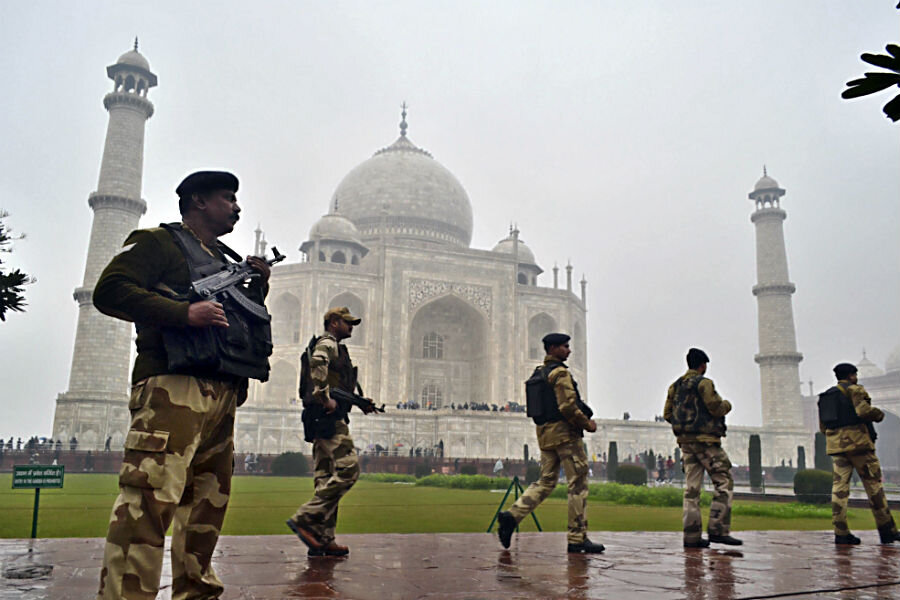Obamas to skip Taj Majal for Saudi visit. Is it a big deal?
Loading...
President Barack Obama and his wife were supposed to finish their three-day visit to India with a trip to the Taj Mahal Tuesday.
Instead, they'll be leaving a half-day early to honor the late leader of Saudi Arabia and meet with the new Saudi King Salman bin Abdul-Aziz Al Saud. A photo-op at India's most famous marble mausoleum or pay your respects to one of the world's most important oil-suppliers, a major US military hardware purchaser, and a key ally in the fight against Sunni and Shiite extremists in the Middle East.
Not a difficult call, really. But still a disappointment to some in India, especially those who had been working hard to give the Obamas a good impression of Agra.
In Agra, some 600 people were paid $3.75 per day to scrub the streets and white marble at the Taj Mahal clean from betel-nut spit stains. Agra workers also cleared some two tons of trash from the nearby polluted Yamuna river, according to NDTV. Cows and stray dogs were rounded up, and for two weeks now, construction work has been halted to prevent dust blowing through the city.
Now, the feud between the US Security Service and Indian environmental law enforcement is moot. "The security agencies from India and the US were not on the same page when it comes to certain minor details about Barack Obama's visit to the Taj," one Indian official told The Hindu.
The minor detail? According to a Supreme Court directive, fossil-fuel powered automobiles are not allowed within a 500-meter radius of the Taj Mahal. But VIP guests are allowed to travel in a battery powered car only to reach the site. Apparently, the US Secret Service was concerned that should the Obamas face a security threat during the Taj Mahal visit, the electric cars wouldn't be fast enough or offer enough protection. But Indiatvnews.com noted: "President Nicolas Sarkozy of France in 2010 and President Vladimir Putin of Russia in October 2000 used battery cars to reach Taj."
"It's also true that they (US secret service officials) were told only Indian soldiers (CISF) will be deployed inside the Taj complex while unarmed US security men will guard the US president. In fact, there is little space for manoeuvre inside the Taj. There are SC guidelines for everything inside the monument and any foreign delegate will have to comply with them," an official reportedly told The Times of India.
But beyond the folks in Agra, the Indian government will be getting most of what it wants out of the Obama visit.
Obama is scheduled to arrive in India on Sunday for meetings with Indian Prime Minister Narendra Modi, then attend Monday's annual Republic Day festivities, which mark the day in 1950 that India's constitution came into force.
"[The invitation from Modi] took us by some surprise," Ben Rhodes, Obama's deputy national security adviser told The Associated Press. "There's a great affinity between the United States and India and our people, but there's also a history that is complicated and that would have made it seem highly unlikely that a U.S. president would be sitting with India's leaders at their Republic Day ceremony."
But Modi visited the US in September and that trip seemed to have gone a long way toward patching up relations, and any lingering concerns over Modi's own controversial past. (Modi was the top elected official in the Indian state of Gujarat more than a decade ago when religious riots there killed more than 1,000 Muslims. When Modi later requested a visa to visit the U.S., Washington said no. Modi has denied involvement in the violence.)
Obama will be the first US president to visit India twice while in office; he also traveled there in 2010 for an economic summit.






